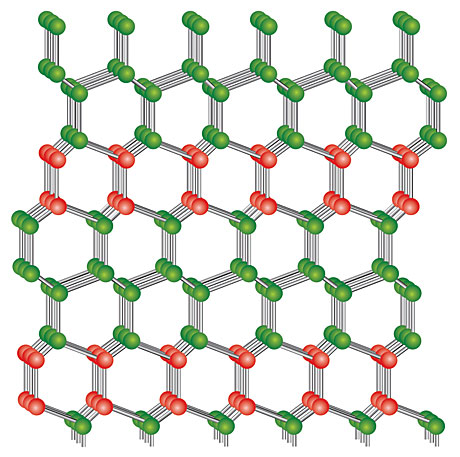The many facets of “cubic ice.”
DOI: 10.1063/PT.3.1877
The many facets of “cubic ice.” In water’s notoriously complex phase diagram, a solid phase commonly known as “cubic ice” or “ice Ic” is frequently encountered in various transitions between liquid, gaseous, and other solid phases. It has been seen, for example, in crystals nucleated out of supercooled water, in cirrus clouds and contrails in the atmosphere, and in the dissociation of gas hydrates. But the phase is metastable, decaying with time and temperature to the more familiar hexagonal ice, ice Ih. Moreover, the phase is not truly cubic. Instead of having an ordered arrangement of two-dimensional layers, the phase is replete with stacking faults, and crystals formed via different routes have different degrees of disorder. Werner Kuhs and colleagues at the University of Göttingen and the Institut Laue-Langevin now show that the stacking order is more complex than previously reported: It is governed by topological preferences between nearest and next-nearest neighboring layers, and a satisfactory description of the disorder requires four parameters. Such a description applies to all the different forms of ice Ic, and the parameter values constitute a reproducible fingerprint for the formation route. In addition, the researchers show that stacking faults introduce kinks in the surface of ice Ic crystals, and the resulting roughness can considerably affect chemical reactivity and other physical properties. There is as yet no evidence that hexagonal ice forms below roughly 190 K, so stacking-disordered cubic ice, say the researchers, must be what is typically encountered not just in our atmosphere—in noctilucent clouds, for example—but around other planets as well. A better understanding of the disorder thus should have significant implications for atmospheric and planetary sciences. (W. F. Kuhs et al., Proc. Natl. Acad. Sci. USA 109, 21259, 2012.)
More about the Authors
Richard J. Fitzgerald. rfitzger@aip.org







